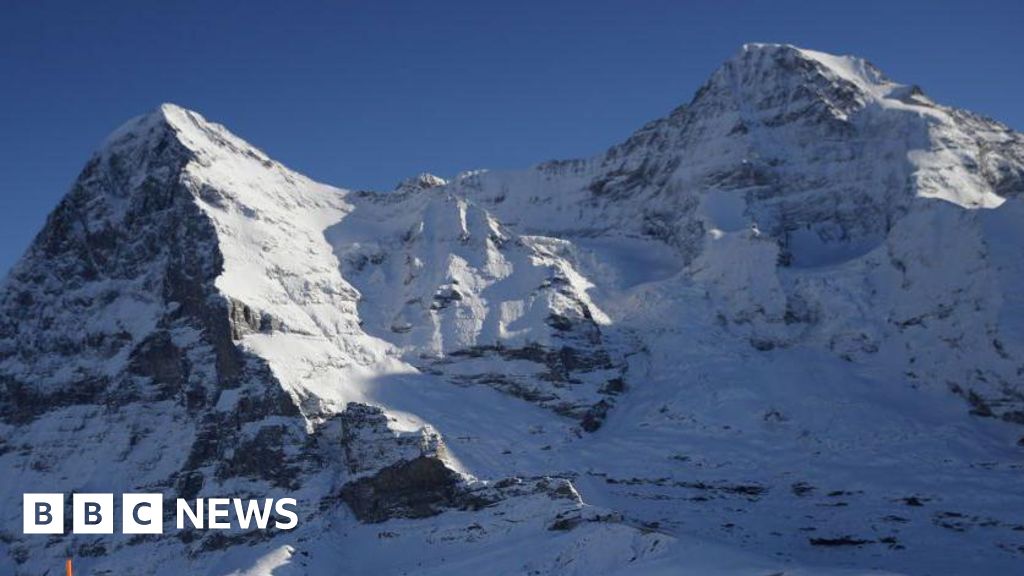A rescue mission is under way to reach several people buried in an avalanche on the Eiger mountain in the Swiss Alps, local police say. The avalanche took place shortly after midday on Saturday, Bern Cantonal police said in a statement on social media. They said they had launched a large-scale operation involving several rescue teams who were looking for people. The Eiger is a 3,967m (13,000 ft) peak near the tourist resorts of Grindelwald, Lauterbrunnen, and Wengen. The north face of the Eiger is famous among mountaineers and it has a reputation as one of the world's most challenging climbs.
Avalanche in Swiss Alps buries several people, police say
TruthLens AI Suggested Headline:
"Rescue Operation Underway After Avalanche on Eiger Mountain in Swiss Alps"
TruthLens AI Summary
A significant rescue operation is currently underway following an avalanche that occurred on the Eiger mountain in the Swiss Alps. According to local police reports, the incident took place shortly after midday on Saturday. The Bern Cantonal police have mobilized multiple rescue teams to search for individuals believed to be buried under the snow. The Eiger, standing at 3,967 meters (approximately 13,000 feet), is not only a prominent peak in the region but is also renowned among climbers for its notorious north face, which is considered one of the most challenging climbs in the world. The location of the avalanche is near popular tourist destinations such as Grindelwald, Lauterbrunnen, and Wengen, making the incident particularly alarming for both locals and visitors alike.
As rescue efforts continue, authorities are focused on locating and rescuing those trapped in the snow. The scale of the operation reflects the urgency of the situation, as teams work against time to ensure the safety of those buried. The local police have emphasized the importance of safety in the area, especially given the mountain's reputation and the risks associated with avalanches in alpine regions. The community is anxiously awaiting updates on the rescue efforts, hoping for a successful outcome. The incident serves as a stark reminder of the dangers inherent in mountain climbing and winter sports, particularly in well-known but perilous locations such as the Eiger.
TruthLens AI Analysis
The news article highlights a significant incident involving an avalanche in the Swiss Alps, specifically on the Eiger mountain. The local police are conducting a rescue operation for several people believed to be buried under the snow. This kind of news typically serves multiple purposes, including raising awareness about the dangers of mountain activities and emphasizing the swift response of emergency services.
Public Perception and Emotional Response
The article aims to evoke a sense of urgency and concern within the community regarding safety in mountainous regions. By focusing on the rescue efforts, it can also engender feelings of solidarity and support for those affected, possibly fostering a communal response to the incident. Such coverage can heighten awareness of avalanche risks and encourage caution among outdoor enthusiasts.
Potential Concealment or Distraction
While there is no direct indication of information being withheld, the focus on the rescue operation may divert public attention from other pressing issues or events happening concurrently in the region or globally. It could be a way to shift the narrative away from political or economic problems that may require scrutiny.
Truthfulness and Manipulative Aspects
The article seems to present factual information regarding an ongoing situation, which lends it credibility. However, depending on the framing and language used, it could be seen as manipulative if it emphasizes emotional appeal over factual coverage. The details provided about the Eiger mountain’s reputation as a challenging climb may aim to reinforce the risks associated with mountaineering, which could serve as a warning for potential climbers.
Connections to Other News
In the broader context of news reporting, this incident may relate to ongoing discussions about climate change and extreme weather conditions, which can influence avalanche occurrences. This connection could signify an underlying narrative about environmental safety and the impacts of climate change on outdoor activities.
Impact on Society and Economy
The consequences of this avalanche could extend beyond immediate rescue efforts. Increased awareness could lead to stricter regulations for mountain activities, potentially affecting tourism in the area. If the incident results in significant loss of life or injuries, it could also impact local economies reliant on winter sports.
Target Audience
This article likely appeals to outdoor enthusiasts, tourists, and locals who are concerned about safety in mountain areas. It may also resonate with those interested in emergency response efforts and community resilience in the face of natural disasters.
Financial Market Influence
While this news may not have a direct impact on stock markets, companies involved in outdoor sports equipment, mountain tourism, or emergency services may be affected in the longer term. Increased safety concerns could lead to changes in consumer behavior, influencing these sectors.
Geopolitical Relevance
From a geopolitical perspective, this incident does not have a significant impact on global power dynamics. However, it can serve as a reminder of the natural challenges faced by countries reliant on tourism and outdoor activities.
Artificial Intelligence Considerations
There is no explicit indication that artificial intelligence was used in crafting this article. However, AI could have influenced the reporting style, potentially streamlining the dissemination of information or optimizing keyword usage for digital platforms. If AI were involved, it might have affected how the urgency and severity of the situation are conveyed.
In conclusion, the news article presents a credible report on a tragic event with potential implications for public safety and community awareness. The framing may evoke emotional responses that could shape public perception of outdoor activities and safety measures.
